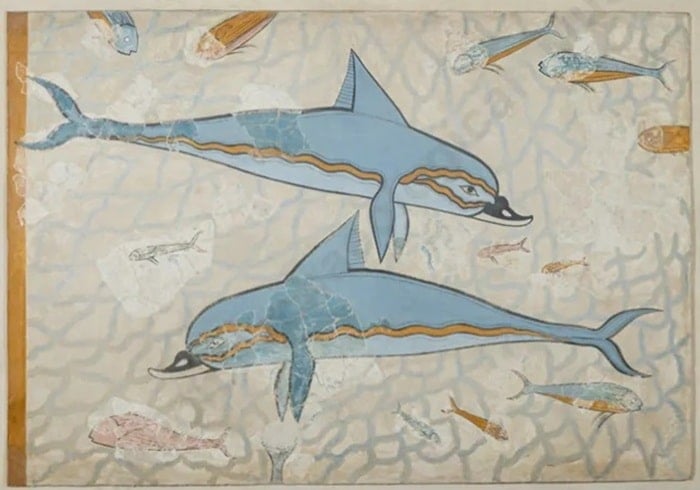

A section of the well-known dolphin mural has collapsed at the Palace of Knossos, one of Greece’s most iconic archaeological sites.
The incident occurred shortly after noon on Friday in the eastern wing of the palace, with around 300 visitors present at the time. Although authorities had already begun evacuating the area due to strong southerly winds, experts attribute the collapse primarily to long-standing maintenance neglect.

According to neakriti.gr, the fallen mural was a 1960s restoration by Arthur Evans, made of plaster and comprising three parts. Two of those sections detached and fell, causing significant damage. The original fresco, known as the “Dolphin Fresco,” is safely housed in the Archaeological Museum of Heraklion.

The affected area has been sealed off and will remain closed until further notice. Officials from the Ministry of Culture have been notified and, per initial reports, have called for the immediate restoration of the site to prevent further deterioration.
The incident has heightened concerns about the structural integrity and ongoing neglect of Knossos, which is currently under review for inclusion on the UNESCO World Heritage list. Local archaeologists and tour guides expressed frustration, noting that they have long warned about the monument’s vulnerability.
“It was only a matter of time,” said a local archaeologist. “The monument needs urgent interventions, not more studies or promises.”
Despite repeated promises for conservation work, large portions of the site remain in disrepair, with some even described as “abandoned.”
The original Dolphin Fresco is one of the most celebrated artworks of Minoan civilization. It depicts two dolphins swimming amidst blue, yellow, and pink fish, set against a light blue sea with a net-like pattern representing the ocean’s shimmering surface.
It is celebrated as one of the most iconic masterpieces of Minoan art, exemplifying the civilization’s deep connection to the sea and its advanced artistic sensibilities.
Dating back to approximately 1600–1450 BC, this fresco is a quintessential example of the “marine style” prevalent in Minoan art, characterized by dynamic depictions of sea life such as dolphins, fish, octopuses, and sea urchins. These motifs reflect the Minoans’ maritime culture and possibly their reverence for marine deities.
Fragments of the fresco were discovered in a lightwell at the east end of the Queen’s Megaron in the palace. While the exact dating remains uncertain, scholars estimate it may date back to the early Neopalatial period (1600–1450 BC).
Knossos is the largest Bronze Age archaeological site on Crete and the center of Minoan civilization. Dating back to around 1900 BC, it features complex architecture, vibrant frescoes, and advanced infrastructure. The palace is linked to myths like the Minotaur and the Labyrinth, reflecting ancient Crete’s cultural and historical significance.
Related: Dolphins, the Demigods of Ancient Greece with the Mythical Attraction
